How To Decorate An Awkward Living Room
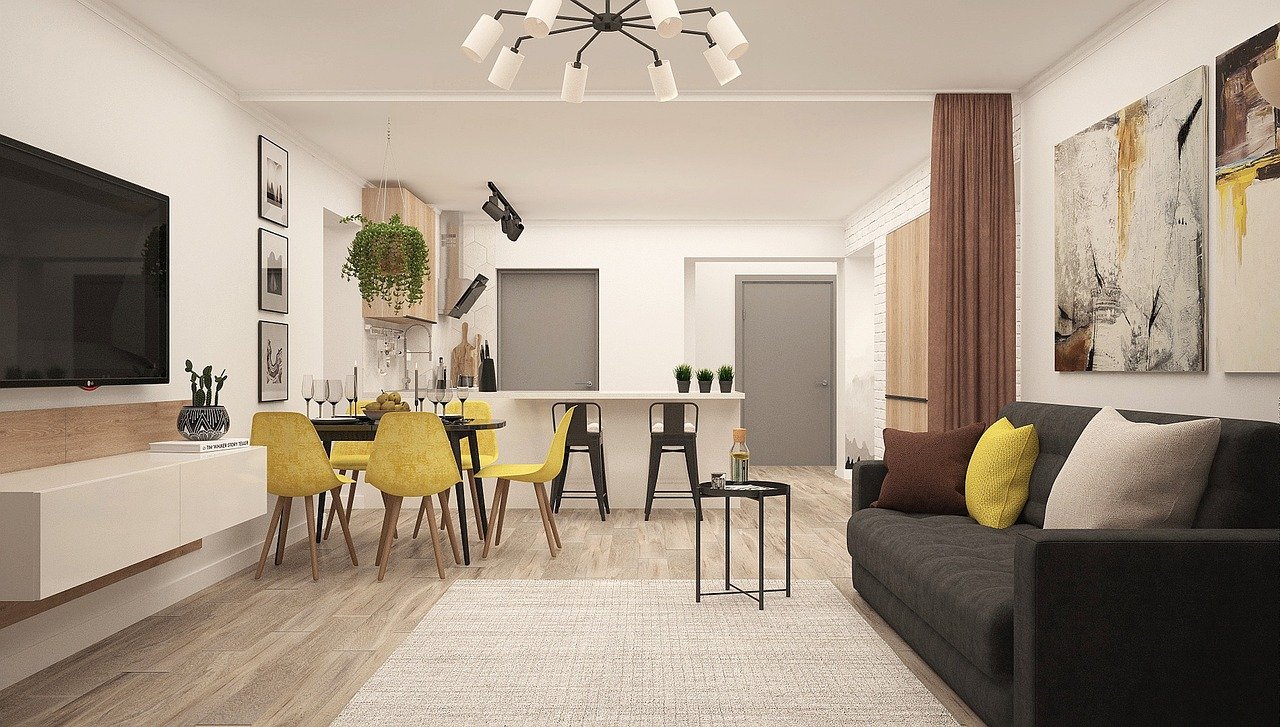
Do you want to know how to decorate an awkward living room? It can be hard to make the most of an oddly shaped room when it comes to ensuring all your furniture and decorations fit, but never fear! With these helpful tips and ideas, I’m here to show you that no matter how odd a space may be, there’s always the potential to turn it into something unique and stylish.
From wall treatment options like bold paint colors or interesting wallpaper patterns to clever layouts for furnishings that utilize any complicated corners or angles of the room. This comprehensive guide explains everything you need to make your living space look stunning.
What Is An ‘Awkward’ Living Room?
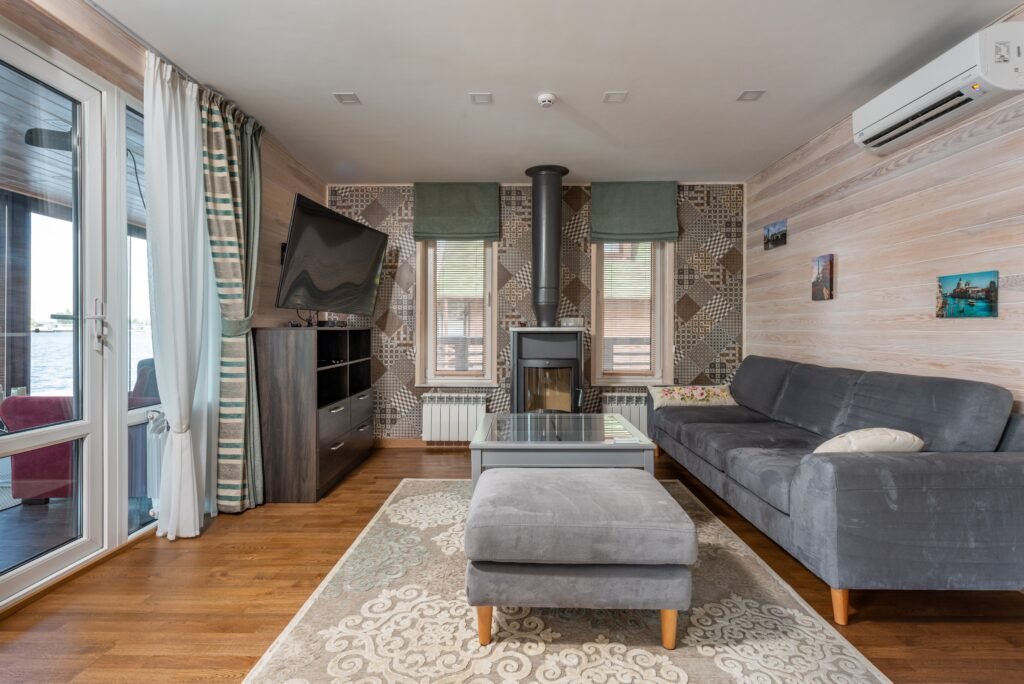
What does an “awkward” living room mean? A living room may be challenging to decorate for a few reasons. It could be challenging to choose where the sofa, coffee table, or extra chairs should go since the space is small or long and narrow. Another possibility is that the room’s construction, such as an alcove or diagonal walls, confuses you. Even if you have a lot of room, you could need help organizing things.
But guess what? An awkward living room isn’t a bad thing at all! In reality, it provides us with many opportunities to use our creativity to construct a comfortable, magnificent area where we can unwind and spend time with our loved ones.
11 Ideas To Decorate An Awkward Living Room
I will share with you 11 fantastic ideas to help transform your awkward living room into an inviting, cozy space that screams, “This is home!” These tips are straightforward to follow, and you’ll see that with a bit of creativity and thinking out of the box, even the quirkiest living room can become the heart of your home.
1. Choose the Focal Points
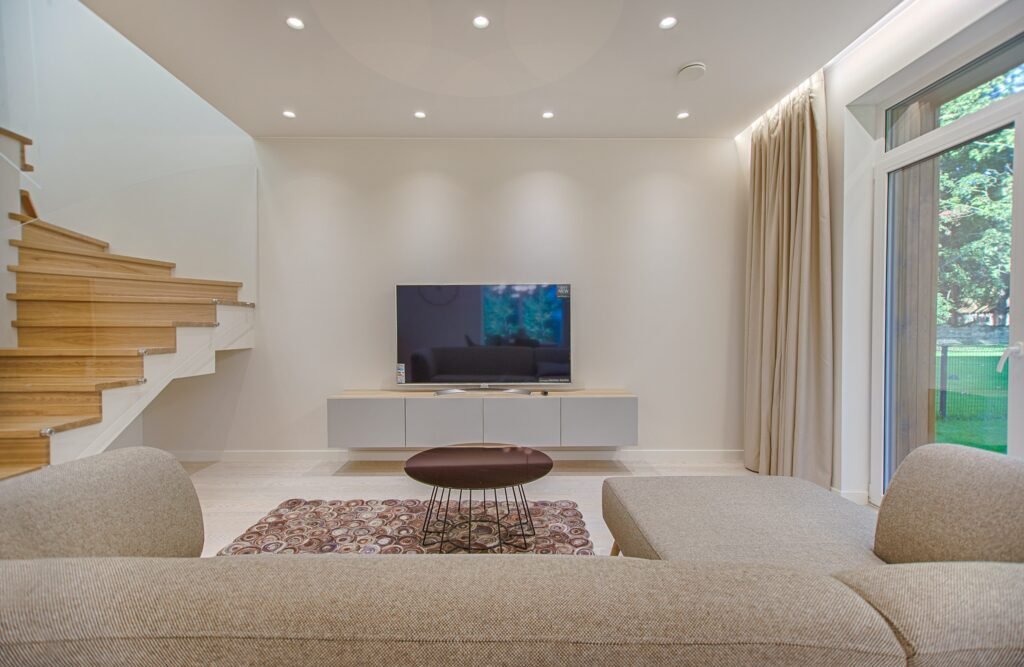
Every room needs a focal point; it’s the spot your eyes naturally draw to when you walk in. For an awkward living room, choosing the focal point can be a bit tricky, but it can be done. It could be anything, like a fireplace, a big window with a great view, or artwork.
After deciding on your focal point, arrange your furnishings to complement it. This will highlight your selected focal point and detract from the odd form of the space. To make the area more clear and complete, it’s essential to balance your furnishings around the focal point.
2. Multi-functional Furniture
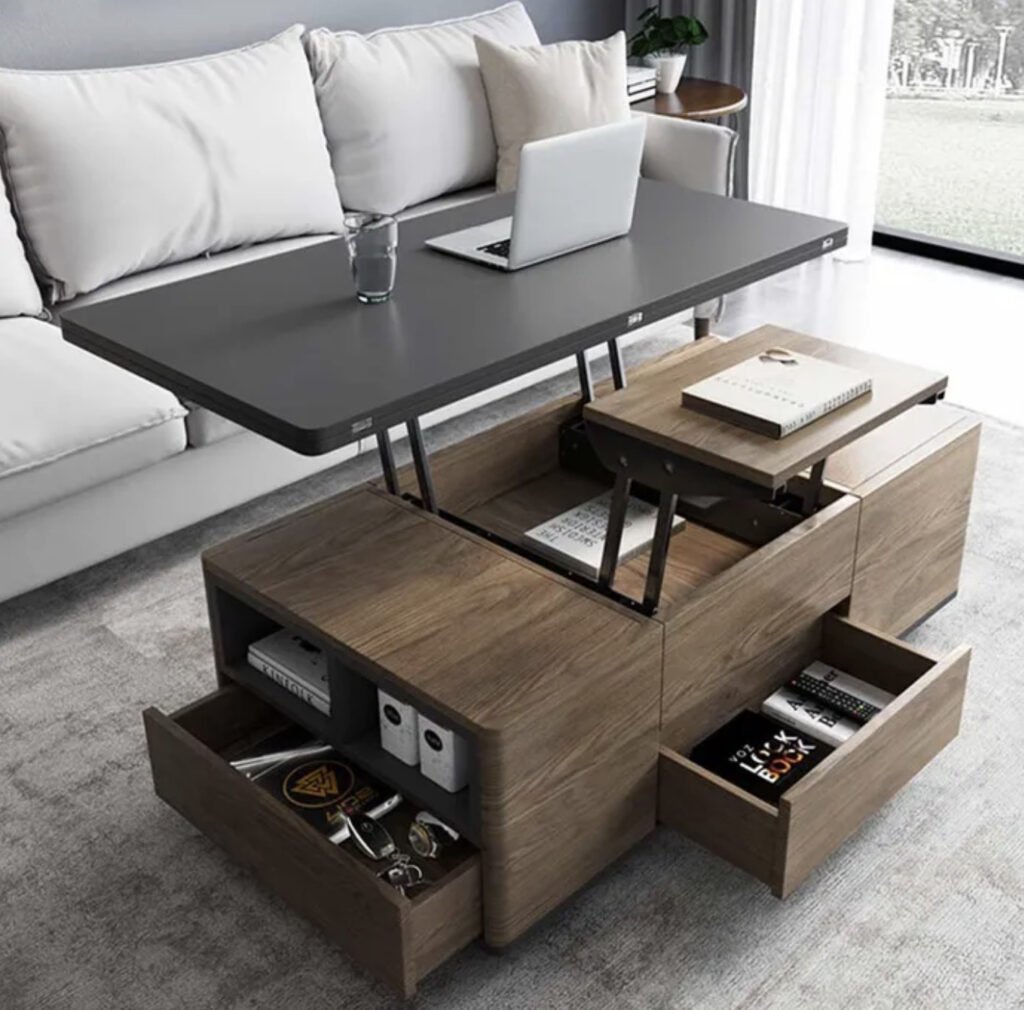
Who says furniture has to do just one thing? First on our list is multi-functional furniture! These pieces can serve multiple purposes, making them practical for any awkward living room. For example, consider an ottoman that can be used as a comfy footrest and as extra seating when you have guests or as a coffee table when needed. Or how about a sofa bed? It’s a great way to make the most out of a tight space, giving you a place to relax during the day and a cozy spot to sleep at night.
Always pick pieces of furniture that are functional for your requirements and look well in your space. You can make the most of your space and use it to your advantage with the appropriate multi-functional furniture!
3. Use of Room Furniture Placement
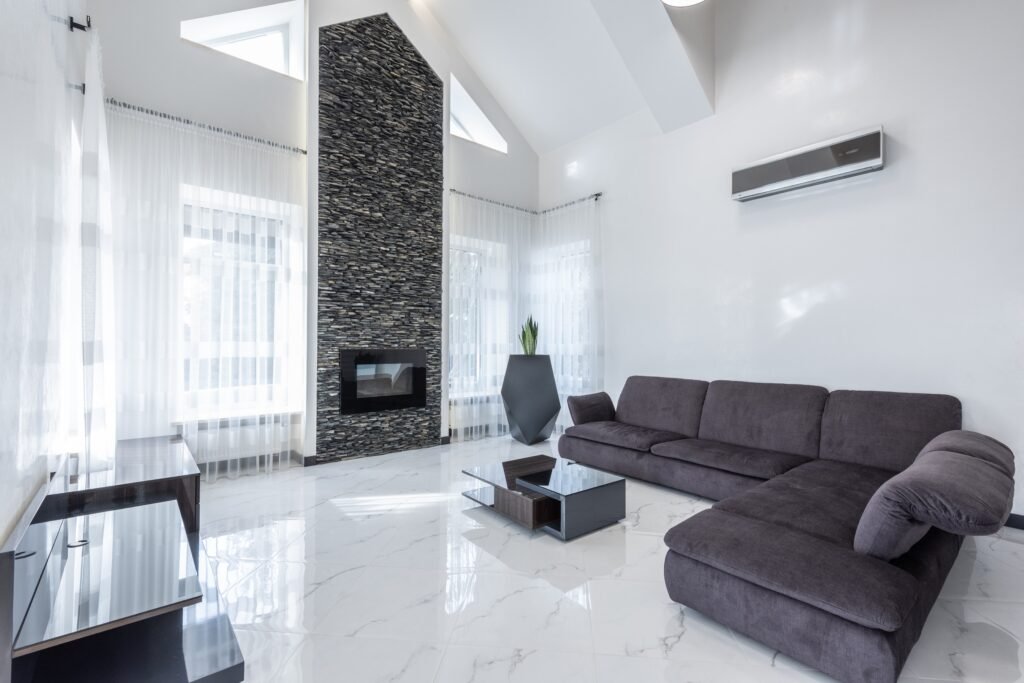
Your furniture layout may significantly impact how a space feels and works. If you have a small space, try placing your tallest furniture pieces—like bookcases or a television stand—along the shorter walls. This may help the space feel more balanced and spacious.
For rooms with odd angles, feel free to angle your furniture, too. You might be surprised at how well a sofa fits when it’s not flush against a wall. This placement helps guide the eye around the room, creating a smooth flow.
Thinking about flow and balance is crucial when setting up your furniture. This entails considering the traffic flow through the space and its overall aesthetic. Here’s a tip: try to create a kind of ‘path’ with your furniture. For instance, you may arrange your sofa and chairs as a L or U, with a coffee table in the center. This facilitates flow by forming a natural route around the furniture.
Try to arrange your furnishings across the space to achieve balance properly. If you have a big sofa on one side of the room, balance it out with something bigger or more visually dominant on the other, such as a big bookshelf or a pair of chairs and a side table. This might improve the ambiance and tranquility of your space.
4. Use Neutral Colors For The Walls

Neutral colors are great for the walls of an awkward living room, especially if it’s small or does not get a lot of natural light. Lighter shades like white, beige, or soft grey can help make the room appear larger and brighter. These colors serve as a blank canvas, allowing you to add splashes of color through your furniture and decorative items.
Additionally, neutral colors tend to work with everything, making it simple to mix up your décor without having to repaint. Don’t forget that you can still utilize darker neutral colors like charcoal or taupe to offer some warmth and coziness if your space is on the bigger side or has lots of light.
Therefore, to select the perfect neutral tone for your area, think about the size, shape, and light in your living room before deciding on a wall color.
5. Define Space With Area Rugs
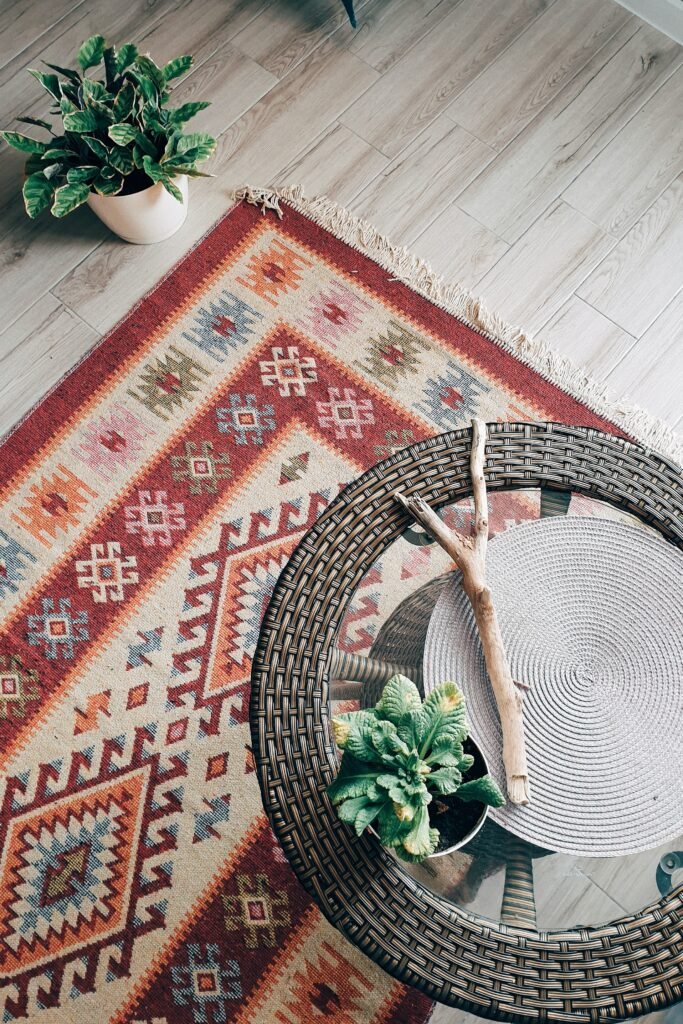
Area rugs are a secret weapon when decorating an awkward living room. Not only can they add style and personality to your room, but they can also help to define different areas within your space. For instance, you could use one large rug to define the main seating area and then use smaller rugs to mark other areas like a reading nook or play area.
Here, it’s important to make sure that the rugs are the right size for each space. They should be big enough to fit all the furnishings there but only take up part of the room. Also, keep in mind that your rugs do not need to match precisely! Playing around with various colors, patterns, and textures may give your area depth and intrigue. Just choose a color scheme that is comparable to keep everything in order.
6. Use Clever Lighting
Lighting is crucial in setting the mood and atmosphere in your living room, especially if it’s an awkwardly shaped one. With clever lighting, you can draw attention to specific areas or features in the room and away from the less appealing parts. Try a combination of task, overhead, and accent lighting for the best results.
Overhead lighting gives general illumination for the room. You can use a beautiful pendant lamp or chandelier as a statement piece in the center of the room or use track lighting for more flexibility. Task lighting, such as floor or table lamps, is great for tasks like reading or crafting. Then, accent lighting can be used to highlight your favorite features in the room, like a piece of artwork or a beautiful fireplace.
Remember, the key is to spread light sources around the room so there are no dark corners or overly bright spots. Also, consider using dimmable lights or lamps with shades to create a cozy, inviting atmosphere. And don’t forget natural light. During the day, let in as much natural light as possible to make the room open and airy. If privacy is a concern, use sheer curtains or blinds that allow light in but keep prying eyes out.
7. Create a Cozy Nook

Don’t let an unattractive living room corner go to waste. Make it into a comfortable corner instead! This might be a reading nook, a compact home office, a kids’ play space, or a comfortable spot to chill. Choose a comfortable chair or a small sofa, and then add a side table to hold a drink or a book. Put in a floor lamp to create a well-lit reading corner.
For a home office, you might need a small desk and chair and some shelves or storage for your office supplies. You can define this space with an area rug, room divider, or curtain if you want more privacy. Don’t forget to add some personal touches, like your favorite artwork or a cozy throw blanket. With some creativity, you can turn any awkward corner into a cozy, functional space that you’ll love using!
8. Avoid Doorway Obstructions
When planning your living room layout, it’s crucial to consider the paths people will take to move around the space. Any furniture or decor obstructing the doorways can make the room feel cramped and uncomfortable and be a safety hazard. Try to keep the areas around doors clear, allowing a sufficient pathway for smooth movement.
If you have a narrow doorway or hallway leading into your room, consider using smaller or more compact furniture pieces in these areas. Alternatively, consider using flexible or multi-purpose pieces that can be easily moved. For instance, a lightweight side table or ottoman could provide a handy surface or extra seating but can also be easily shifted out of the way when not in use.
9. Use Accents To Add Character

Accents are small but impactful elements that can bring a sense of personality and charm to your awkward living room. This can include throw pillows, artwork, decorative items, picture frames, and even plants. You can use these accents to bring in pops of color, texture, or pattern that complement your neutral walls and enhance your room’s overall aesthetic. For example, bright and bold throw pillows can liven up a neutral sofa, while a collection of family photos or artworks can create a personal and meaningful gallery wall.
Plants, on the other hand, can add a touch of nature and freshness to your space. Choose accents that reflect your style and make your room feel like home. But be careful not to overdo it – too many accents can make a room feel cluttered and chaotic. Instead, try to find a balance that feels right for you, creating a stylish and comfortable space.
10. Brighten and Widen With Mirrors
Mirrors can be your best friend if your living room feels cramped or lacks natural light. They reflect light and create an illusion of space, making your room look brighter and more spacious. You can place a large mirror on a wall opposite a window to reflect natural light. Or, use several smaller mirrors in a collage for a fun, decorative effect. Another clever idea is to use a mirror behind a light source, like a lamp or a candle, to amplify the light. Even a mirrored coffee table can brighten your space!
But just like with accents, don’t go overboard. One well-placed mirror can be more effective than many small ones scattered around the room. And always make sure the mirror reflects something you want to see more of – a beautiful piece of furniture or artwork, not the cluttered bookshelf or the trash can.
11. Design Around Your Angled Fireplace

Dealing with an angled fireplace can be challenging, especially when aiming for a warm and welcoming feel in your living room space. There are a couple of strategies you can consider. If you don’t intend on using the fireplace regularly, or your home has a more modern design, it’s perfectly okay to arrange your furniture as though the fireplace doesn’t exist. This enables a flexible layout catering to your needs and preferences.
On the flip side, if you admire the charm of a crackling fire or want to foster a more intimate setting, make that fireplace the centerpiece of your room. Position your furniture around it to create a gathering spot that’s perfect for quality family time or a conversation area with friends. The shared focus on the fireplace can foster a more connected and cozy atmosphere, especially if you do not spend much time watching television.
However, let’s avoid pushing furniture up against the fireplace. Not only does this consume precious floor space, but it can also limit the flow of movement around the room. Plan carefully, and you’ll be able to create a harmonious balance between functionality and aesthetics, no matter how awkward that angled fireplace may seem at first glance.
Frequently Asked Questions
Q: What are some small living room layout ideas?
There are many ways to make the most out of a small living room. For instance, you could strategically position your furniture to create different zones, like a reading corner or a TV area. Multi-tiered coffee tables or ottomans with storage can help to declutter the room and make it feel more spacious. Also, consider using vertical space – high shelves or wall-mounted units can free up floor space and draw the eye upwards, making the room feel larger.
Q: How should I arrange furniture in long, narrow living rooms?
Arranging furniture in a long, narrow room can be tricky. The key is to break up the room’s length so it doesn’t feel like a corridor. Try creating separate zones or areas for different activities. For instance, one end could be lounging with a sofa, coffee table, and television, while the other end could include a desk for work or study. A rug under the main seating area can help to define the space and make it feel cozy.
Q: How can I decorate my living room with slanted walls?
Slanted walls can add character to a room, but they can also make it difficult to arrange furniture. To overcome this, consider using low or modular furniture that can fit under the slant. Use the highest part of the wall for storage or display purposes. Alternatively, you can paint the slanted wall a contrasting color to make it a design feature.
Q: What’s the best way to utilize a bay window in my living room?
Bay windows are a great feature that can add charm and extra space to your living room. You could create a cozy reading nook with a comfy chair and a side table. Or, you could install a window seat with built-in storage underneath. This can provide a great place to relax, read, or enjoy the view.
Q: How do I plan a living room layout with a corner fireplace?
Arranging a living room with a corner fireplace can be challenging. The best approach often depends on your specific needs and preferences. If you want to make the fireplace the focal point, arrange your seating to encourage conversation around the fireplace. Avoid placing furniture directly against the fireplace to ensure a clear flow of movement around the room. Balancing the room with correctly sized furniture and accentuating the room with the right accessories can help to create a warm, inviting space.
Final Words
It’s always a challenge to transform an awkward living room into something cozy and inviting, but with the right design principles and a little creativity, it can be done. The key is evaluating your space and finding ways to draw attention away from quirks or design problems. This can be done by orienting furniture to create balance, introducing bold statement pieces, avoiding clutter, and strategically using colors and patterns.
If all else fails, you can always re-decorate or add permanent storage solutions like built-in shelving. Whatever you choose to do, remember that your living room should tell a story that reflects your style. Now, it’s time for you to give it your unique spin! Whether you’re looking for more inspiration or ready to tackle the project head-on – take action! Get started and turn that awkward living room into one everyone will love spending time in.






